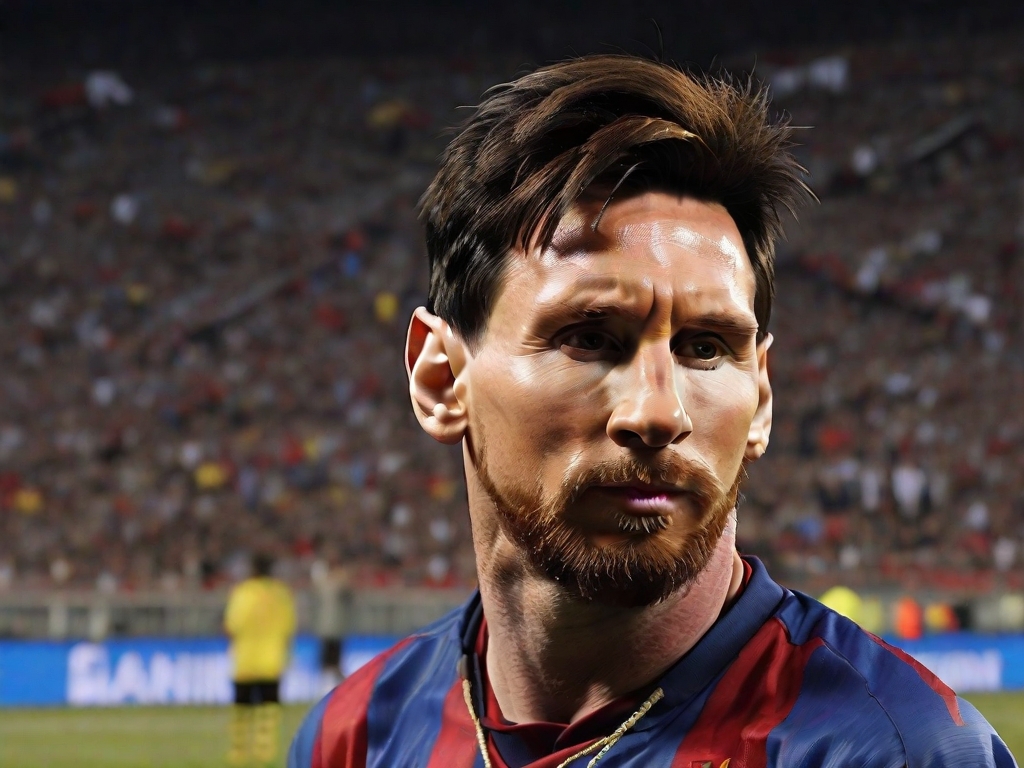An In-Depth Look at La Liga: Spain’s Premier Football League
Introduction: La Liga, the pinnacle of Spanish football, has captivated fans around the globe with its breathtaking matches, exceptional talent, and historic rivalries. But before it became a powerhouse league, La Liga had humble beginnings that laid the foundation for its eventual rise to football greatness. In this article, we explore the fascinating origins of La Liga and trace its journey to becoming one of the most prestigious leagues in the world.
-
The Birth of La Liga: La Liga was officially established in 1929, bringing together top Spanish football clubs under one league. The primary motive was to organize a professional football competition that could showcase the finest talent in the country. Its inauguration marked a significant milestone in Spanish football history.
-
Early Format and Challenges: In its early years, La Liga consisted of ten teams, including Real Madrid, Barcelona, and Athletic Bilbao, among others. The inaugural season saw Barcelona emerge as the first champions. However, financial struggles, infrastructure limitations, and political unrest posed challenges to the league’s growth and stability.
-
The Impact of the Spanish Civil War: The outbreak of the Spanish Civil War in 1936 disrupted La Liga, leading to a suspension of the competition for three years. This conflict had a profound impact on football in Spain, with players and clubs being directly affected. It wasn’t until 1939, towards the end of the war, that La Liga was able to resume its operations.
-
Expansion and Evolution: Following the war, La Liga underwent a period of expansion, with the inclusion of more teams and the introduction of foreign players. This brought a new level of competitiveness and quality to the league, attracting increased attention both domestically and internationally. The introduction of television broadcasting further enhanced its popularity.
-
Rivalries and Icons: Over the years, intense rivalries grew between the top clubs of La Liga. The clashes between Real Madrid and Barcelona, popularly known as El Clásico, became legendary battles that transcended football. Players like Alfredo Di Stefano, Johan Cruyff, and Lionel Messi became icons of La Liga, leaving an indelible mark on the league’s history.
-
Global Recognition and Success: La Liga’s success has not been limited to Spain. With its attractive playing style, technical excellence, and world-class talents, the league has captured the attention of football enthusiasts on a global scale. Spanish clubs have consistently excelled on the European stage, winning numerous UEFA Champions League titles and establishing La Liga as a dominant force.

Iconic Clubs of La Liga: A Glimpse into Spanish Football Heritage
Spanish football heritage is a captivating journey that encompasses iconic clubs, passionate rivalries, and a unique playing style. When delving into the history of Spanish football, one encounters a rich tapestry of cultural significance and sporting excellence. Let’s take a glimpse into the magnificent heritage that has shaped Spanish football.
1. Birth of Football in Spain:
Football first arrived in Spain in the late 19th century through British expatriates and students. These pioneers introduced the game to local communities, laying the foundations for its subsequent development. The first football clubs in Spain, such as Recreativo de Huelva and the now-famous Real Club Recreativo de Sevilla, were established during this period.
2. Royal Connection: Real Madrid and Barcelona:
Real Madrid and Barcelona, two of the most prominent clubs in the world, hold a special place in Spanish football heritage. Real Madrid originated in 1902 as Madrid Football Club, while Barcelona was established in 1899 as Foot-Ball Club Barcelona. These clubs would later become symbols of regional and cultural identities, with Real Madrid representing the Spanish crown and Barcelona embodying Catalan pride.
3. Athletic Bilbao: The Unique Club:
Athletic Club, based in Bilbao, stands apart in Spanish football heritage due to its policy of fielding only Basque players. This commitment to local talent has made Athletic Bilbao an embodiment of regional identity and cultural pride. The club’s philosophy has allowed it to remain competitive while staying true to its roots, earning admiration and respect throughout Spain.
4. Intense Rivalries:
Spanish football heritage is enriched by fierce rivalries that go beyond the confines of the pitch. The clash between Real Madrid and Barcelona, known widely as El Clásico, has captured the imagination of fans worldwide. The historical, political, and cultural dimensions of this rivalry make it one of the most intense and passionately contested matches in football.
5. Style and Tiki-Taka:
Spanish football heritage also encompasses a distinctive playing style known as “Tiki-Taka.” Characterized by deceptive passing, intricate ball control, and relentless pressing, Tiki-Taka revolutionized the game. This style of play was prominently exhibited by the Spanish national team during their triumphant run in the UEFA European Championships in 2008 and 2012, stamping their authority on international football.
6. International Success and Legacy:
Spanish football heritage extends to the international stage. Spain’s national team, La Roja, has adorned the footballing world with their technical finesse and tactical brilliance. The national squad’s conquests, including the historic UEFA European Championship victory in 2008, followed by the FIFA World Cup triumph in 2010, solidified their status as one of the most dominant teams of their era.
As we reflect on Spanish football heritage, we uncover a rich tapestry of clubs, rivalries, playing styles, and triumphs that have shaped the sport in Spain. The passion, skill, and dedication exhibited by players and clubs have left an indelible mark on the national consciousness, making Spanish football a source of pride and admiration worldwide.
The Unparalleled Talent Pool: Top Players in La Liga’s History
La Liga has been home to some of the greatest football players to ever grace the sport. Their talent, skill, and charisma have solidified their place in the history of Spanish football. Let’s take a look at some of the top players in La Liga’s illustrious history:

1. Lionel Messi:
Undoubtedly one of the greatest footballers of all time, Lionel Messi’s impact on La Liga is immeasurable. Spending the majority of his career at Barcelona, Messi has mesmerized fans with his incredible dribbling, vision, and goal-scoring ability. Winning numerous titles and breaking numerous records, Messi’s influence on La Liga has been profound.

2. Cristiano Ronaldo:
Although now plying his trade in other leagues, Cristiano Ronaldo’s time in La Liga was nothing short of remarkable. His six-year spell at Real Madrid saw him amass an astonishing goal record, thrilling fans with his aerial prowess and incredible athleticism. Ronaldo’s fierce rivalry with Messi added to the spectacle of La Liga.
3. Alfredo Di Stefano:
A legend of Real Madrid, Alfredo Di Stefano defined an era in La Liga. His versatility, goal-scoring ability, and leadership skills helped lead Real Madrid to unparalleled success in the 1950s and 1960s. Di Stefano cemented his status as one of the greatest players in La Liga history.
4. Johan Cruyff:
Although best known for his time at Ajax and with the Netherlands national team, Johan Cruyff also left an indelible mark on La Liga during his stint with Barcelona. As both a player and later as a coach, Cruyff’s influence on Barcelona’s playing style and philosophy was immense, helping shape the club’s future success.
5. Raúl:
Real Madrid’s all-time leading goal scorer, Raúl Gonzalez Blanco, was an emblematic figure in La Liga. His loyalty, professionalism, and consistent goal-scoring ability made him a beloved figure among Real Madrid fans. Raúl’s contributions to the club spanned over 16 seasons, leaving an enduring legacy in La Liga.
6. Xavi Hernandez:
A key figure in Barcelona’s golden era under Pep Guardiola, Xavi Hernandez’s elegance and intelligence in midfield were fundamental to the team’s success. Xavi’s exceptional passing ability and deep understanding of the game made him an integral part of Barcelona’s tiki-taka style of play.
7. Iker Casillas:
Regarded as one of the best goalkeepers in the history of La Liga, Iker Casillas achieved unparalleled success with Real Madrid. Known for his agility, reflexes, and leadership, Casillas was instrumental in Real Madrid’s triumph in both domestic and international competitions.
These players represent just a fraction of the exceptional talent that has graced La Liga throughout its history. Many other great players have left their mark on the league, contributing to its reputation as one of the most competitive and exciting football leagues in the world.
Conclusion: From its modest beginnings to its current status as one of the most grandiose football leagues, La Liga has undergone a remarkable transformation. Overcoming challenges, nurturing rivalries, and producing footballing legends, La Liga has become a testament to the relentless passion for the beautiful game in Spain. As we marvel at the present-day brilliance of La Liga, we must remember and appreciate the journey that led to its football greatness.
